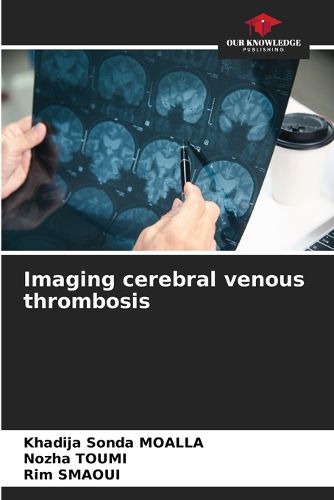Readings Newsletter
Become a Readings Member to make your shopping experience even easier.
Sign in or sign up for free!
You’re not far away from qualifying for FREE standard shipping within Australia
You’ve qualified for FREE standard shipping within Australia
The cart is loading…






This title is printed to order. This book may have been self-published. If so, we cannot guarantee the quality of the content. In the main most books will have gone through the editing process however some may not. We therefore suggest that you be aware of this before ordering this book. If in doubt check either the author or publisher’s details as we are unable to accept any returns unless they are faulty. Please contact us if you have any questions.
Cerebral venous thrombosis (CVT) is a diagnostic and therapeutic emergency that can lead to serious sequelae. Early diagnosis and prompt treatment can reduce the morbidity and mortality associated with this pathology. Clinical polymorphism underlines the importance of cross-sectional imaging for accurate diagnosis. Both CT and MRI provide direct evidence of venous occlusion, but MRI is superior to CT in detecting a clot in cortical or deep veins. Thrombus appearance on MRI is variable over time. MRI provides a better assessment of any associated venous infarcts. Finally, it helps to orientate the etiological diagnosis, to look for associated lesions and to rule out certain differential diagnoses.
$9.00 standard shipping within Australia
FREE standard shipping within Australia for orders over $100.00
Express & International shipping calculated at checkout
This title is printed to order. This book may have been self-published. If so, we cannot guarantee the quality of the content. In the main most books will have gone through the editing process however some may not. We therefore suggest that you be aware of this before ordering this book. If in doubt check either the author or publisher’s details as we are unable to accept any returns unless they are faulty. Please contact us if you have any questions.
Cerebral venous thrombosis (CVT) is a diagnostic and therapeutic emergency that can lead to serious sequelae. Early diagnosis and prompt treatment can reduce the morbidity and mortality associated with this pathology. Clinical polymorphism underlines the importance of cross-sectional imaging for accurate diagnosis. Both CT and MRI provide direct evidence of venous occlusion, but MRI is superior to CT in detecting a clot in cortical or deep veins. Thrombus appearance on MRI is variable over time. MRI provides a better assessment of any associated venous infarcts. Finally, it helps to orientate the etiological diagnosis, to look for associated lesions and to rule out certain differential diagnoses.